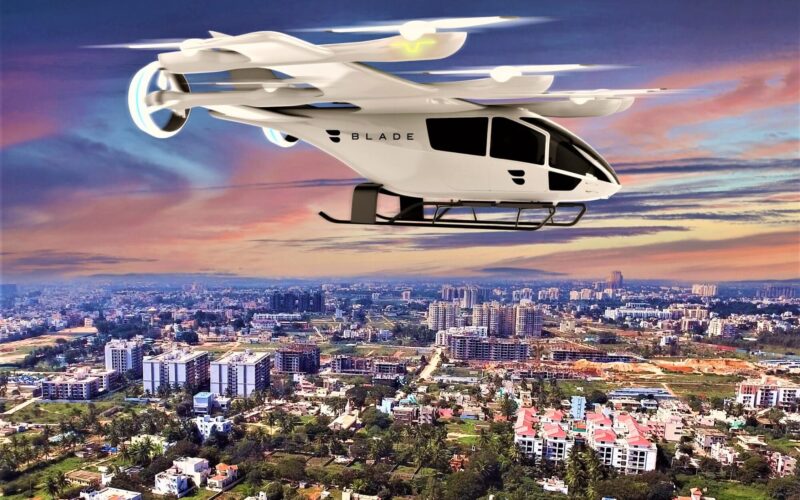FlyBlade India has placed a non-binding purchase order with Brazilian electric vertical take-off and landing (eVTOL) aircraft developer Eve Air Mobility for up to 200 air vehicles.
Under terms of the strategic partnership, FlyBlade, a joint venture between New York-based urban air mobility platform Blade Air Mobility and New Delhi-based investment firm Hunch Ventures, aims to acquire 200 air taxis at a list price of around $3 million per aircraft.
The partnership, which was officially announced on September 27, 2022, also includes maintenance and support for Eve’s eVTOLs as well as the implementation of Eve’s Urban Air Traffic Management (UATM) software solution.
According to Eve Air Mobility co-chief executive André Stein, the recent collaboration with FlyBlade will help the eVTOL developer to enter the Indian market and strengthen its position.
“We look forward to offering the people of India a zero-emission UAM solution in the future that will be quiet, efficient, and accessible,” Stein said.
Planning to operate Eve’s eVTOL at least 50,000 hours per year, FlyBlade expects to offer sustainable and affordable air taxi services, which will become “accessible to the masses”, across the region.
“India is a unique market with its vast expanse, accessibility concerns, traffic congestion, and regulations. As the pioneers of providing short-haul air mobility services in India, FlyBlade will act as Eve’s on-ground knowledge partner to create the Urban Air Mobility (UAM) ecosystem,” Eve said in a statement.
“The data collected through FlyBlade India’s customer experience and operations will be used to further develop Eve’s eVTOL, service and support solutions, and its UATM software. BLADE India will initially underwrite 50,000 hours of flight time per year using Eve’s eVTOL in the country,” the developer concluded.
Eve’s four-seater flying taxi is expected to enter commercial service in 2026. Its targeted range will be up to 60 miles (96 kilometers), and the cruising speed will be up to 125 miles per hour (201 kilometers per hour).

